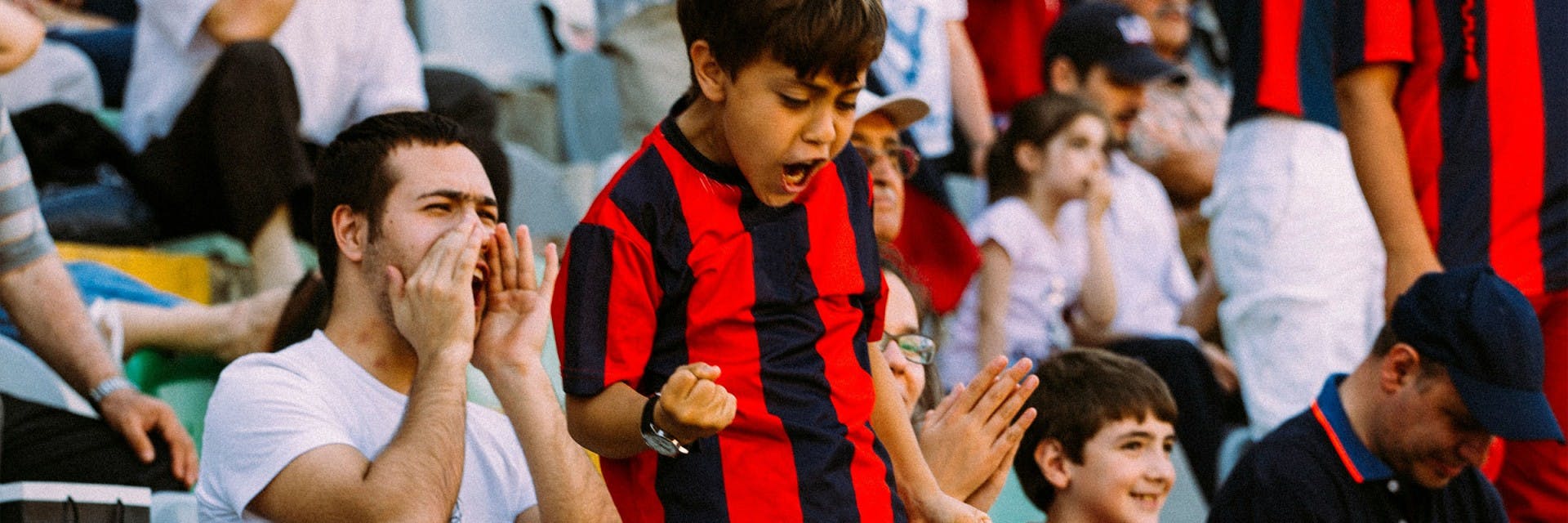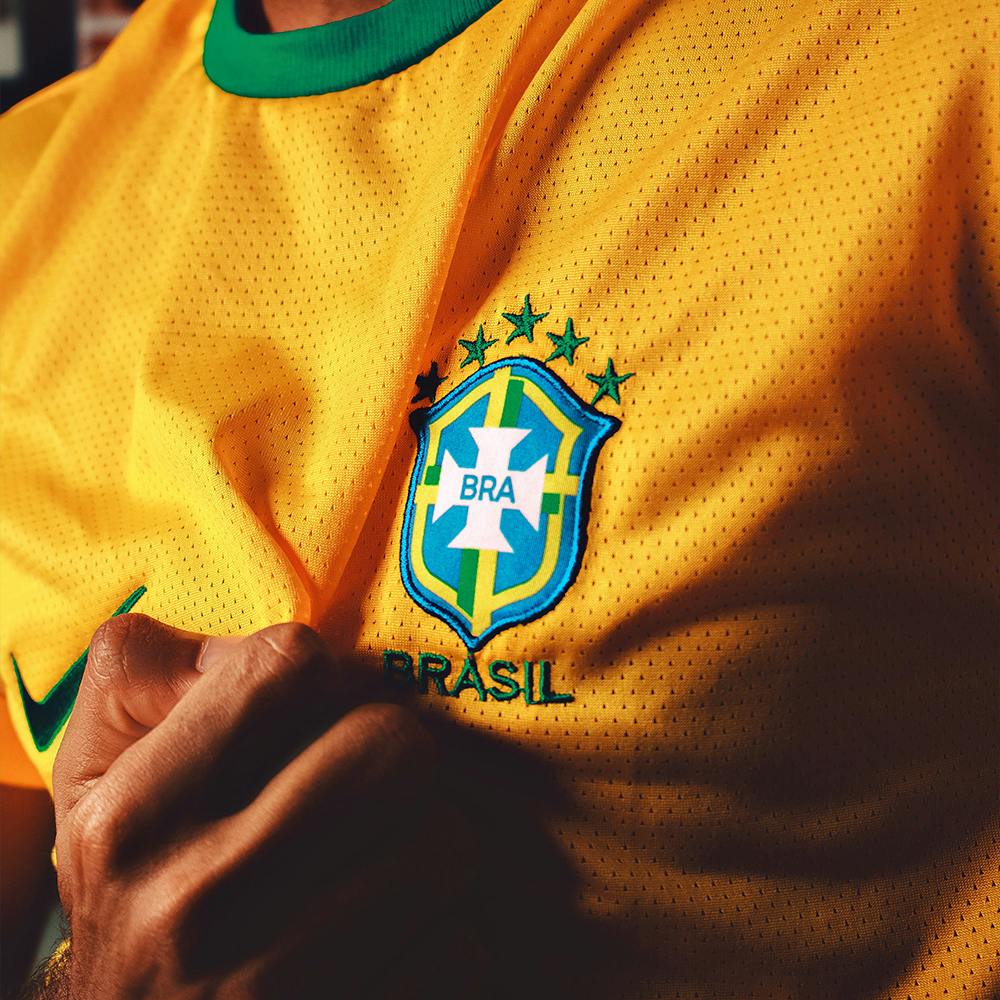belong to world
Football jerseys: a true pop phenomenon but also meant to create identities
What makes a simple piece of colorful fabric so appealing and desirable? The importance of identifying with an idea, of belonging to a community, of having common values.

There are football jerseys that are the symbol and “tale” of entire decades. Just think about some football jerseys that the most football-savvy would call “iconic”, able to become synonym for legends and, at the same time, to bring back the memory of some years full of melancholy. Football jerseys have become in time real cult items, transcending time and space. Rare pieces, which are perfect to develop dedicated marketing strategies and to reach the heart of the strongest supporters as well as of not regular ones. Today football jerseys are one of the most profitable marketing tools football teams have: just to mention that between 2007 and 2012 30 millions of shirts were sold belonging only to Real Madrid, Chelsea, Barcelona and Bayern Monaco.
So, what kind of emotions does a simple colored item of clothing arouse as to make it so fascinating and desirable? Each football jersey is a “uniform”, a football kit that often implies an identity, belonging to something, something that hides a story. Each shirt tells who and what we are, it represents a kind of symbol. It turns into an object on which we project dreams, wishes, behind which we sometimes hide political views. Shirts we link to flags, to players who became true icons for entire generations and entire cities: Franco Baresi with his hand up or the stylish running style of Paolo Maldini wearing AC Milan’s shirt, Alex Del Piero and his togue out and the elegance of Andrea Pirlo wearing Juventus black-and-white stripes, the sculpted legs of Javier Zanetti and the self-confidence of Giacinto Facchetti wearing Inter’s strip. Without forgetting the purple “stamped” on the skin of Gabriel Batistuta and, above all, the yellow and red heart of Francesco Totti, an icon of AS Roma. Players who were able to represent the desire for millions of people to identify themselves with them, pop phenomena and sport icons who turned the football jerseys they wore into the desired object for people of all ages, thanks to their achievements. A social role, the one played by the signature players of a team and by their shirts, that leads to a sense of belonging and a passionate bond with a community, made of values and wishes to be nourished.
Values and dreams that are keywords for sport people, for sport lovers and for those who, like us at Teddy, turn those concepts into an integral part of their own way of understanding work and the relationship between employees and Company: the importance of identifying yourself with an idea, of belonging to a community, to share the same values.

It is just actually that connection among people, icons, identity and style that makes football jerseys an increasingly more fascinating topic, drawing together the “high” and the “low”, scientific research and the most pop phenomena, In the end, it is a world not that far and not so different from that of fashion, above all when talking about fashion within everyone’s reach. For example, just think about the success of something like Classic Football Shirt. Two friends who in 2006, the World Football Cup approaching, decided to obsessively search for the valuable and “one-of-a-kind” strip of united Germany after the fall of the Berlin Wall The white shirt featuring the three adidas trademark stripes on the shoulders and the German flag colors striped on the chest is the reason why today hundreds of people every day visit the Best of Classic page on the website to find memorabilia, a piece of their own memory, a strip with a special meaning. It is a kind of Wikipedia of football strips, which however has become a profitable business in time, with a strong connection to Italy. Because if everything can be traced back to the successful German World Cup of 2006, in turn such a business could only grow and be successful partly thanks to the painstaking investigating skills of those two British friends, eager to find the Holy Grail of any collector: a stock of items inside a warehouse belonging to AC Milan, including about 30,000 items going from strip n.7 worn by Shevchenko to the shorts n.32 belonging to David Beckham. In time the business has grown so much that Classic Football Shirt became the sponsor, the main one or the second one, on the shirts of Burnley, Parma and Sheffield Football Club, the oldest football club in the world.
Football jerseys are used not just to show your soccer faith but also your political one. It is the case of the strip of Corinthians dating back to 1977, the years of the ideological football movement of Democracia Corinthiana and Socrates, but also of the strips of St. Pauli, who made their support to political refugee and their opposition to right-wing extremism their own badge of honor. From Brazil to Germany, crossing the United Kingdom, where the strip of the English national football team is a kind of symbol to boast their own identity swinging between the danger of nationalism and the passion for the music world of artists, like Blur’s Damon Albarn or New Order’s Bernard Sumner, certainly much more inclusive.


The ancient bond between music and football, and more broadly between football jerseys and more or less pop phenomena, has become closer in time: in the beginning there were Bob Marley with the strip of Santos, Michael Jackson with the jersey of Nizza and the Rolling Stones and their live concert in Turin wearing the Italian national team strip; later it was the case of Manchester and the Brit pop music connecting the world of “football casual clothing” with music. At the beginning of the 2010s the German musician Paul Kalkbrenner, also thanks to the success he had in that period, brought back the fashion of football jerseys among mass audience, above all with reference to vintage strips, which made him start a collaboration with the brand COPA to create a dedicated football shirt. Today, also with fashion trends being amplified by TikTok, the football jersey trend started to be called Bloke Core, made famous by VIPs such as Kim Kardashian and Chiara Ferragni wearing them.
From the point of view more strictly connected to the football pitch, in the latest years football clubs such as Manchester City and Marseilles wanted to pay homage to the music history of their respective cities, dedicating their third jersey the former to the dance and psychedelic background of Hacienda and the latter to the hip hop you can hear along the sloping streets of the city. The same hip-hop music that relaunched the trend of jerseys worn during live concerts or on the streets, thus generating a true imitation effect following the several Drake, Pusha T, Stormzy, Tyler the Creator and Snoop Dogg wearing football jerseys. Without taking into account commercial operations such as the collaboration between Marcelo Burlon, a brand very popular in the Italian region of Campania, and Napoli football team, similar to the creation of a new union between sport, and more in particular football, and other types of pop phenomena.
It is certainly a matter of identity, of bonding with people and society but also a matter of business.